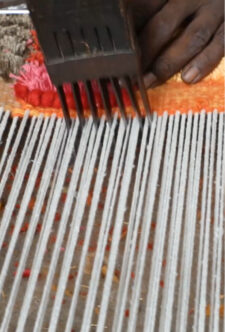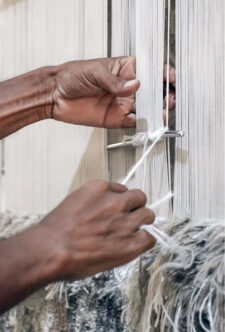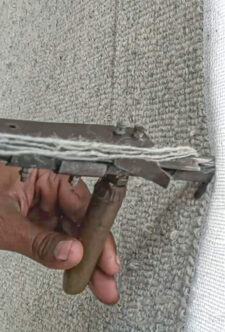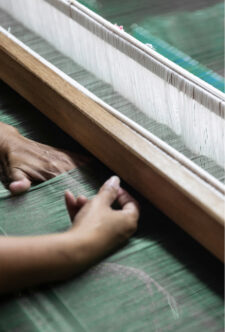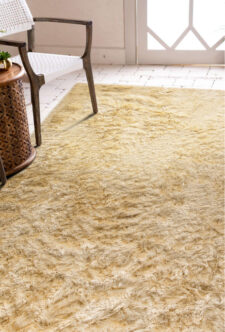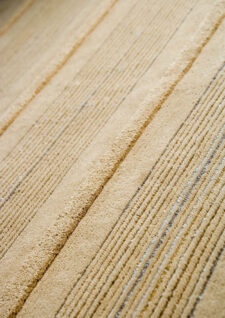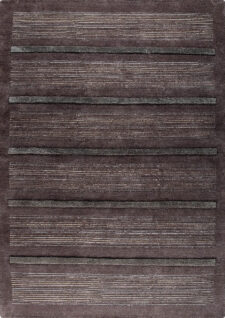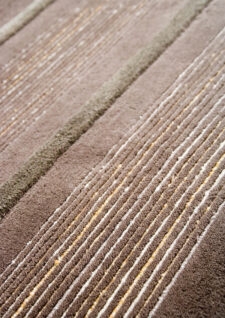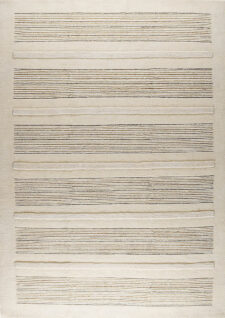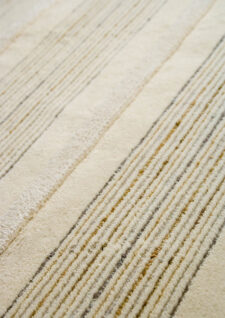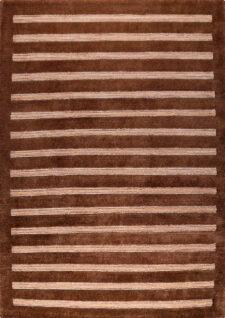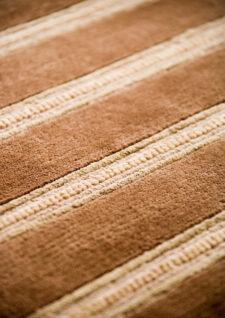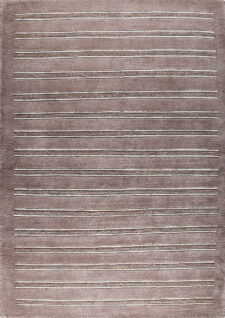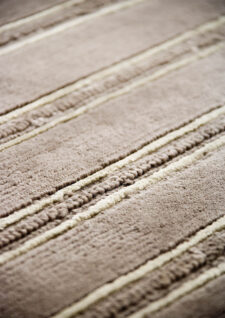Hand Knotted Rugs
Showing 1–5 of 30 results
How are Hand Knotted Area Rugs made?
A hand knotted rugs brings in timeless style and a precious vibe to the home. Skillfully handcrafted by artisans, hand-knotted area rugs are a result of techniques that got passed down by generations. The oldest handmade rug on record is the Pazyryk Rug, which dates back to the 4th century BC. Even today, hand knotted rugs have got a touch of sacredness, as a weaver spends months tying the knots to form beautiful patterns.
Getting hand-knotted area rugs means bringing in a classic and energized feeling into the home. It is like breathing life into a space. hand knotted rugs are the ‘cream of the crop’ when we talk about carpets and rugs. The exquisite beauty, fine craftsmanship, and impeccable durability make hand knotted area rugs the masterpieces that every home deserves.
What is a Hand-Knotted Rug?
Hand-knotted rugs are crafted meticulously with traditional hand knotted rugs techniques on specially designed looms. The method of knotting these rugs has come to us from central Asia and dates back to more than a thousand years. The creation of these rugs is a labor-intensive process that requires refined expertise. The unique weaving technique used in making a hand-knotted rug involves thousands of knots inserted and then tied individually to the base or the rug’s foundation. The knots combine to form the pile, and the entire process works from the bottom going up.
The hand-knotting rug technique starts with the warp threads and the weft threads. The vertical threads are the warp threads, while the threads that run horizontally are known as weft threads. The foundation of a hand knotted area rugs created weaving weft in and out of the warp threads over the loom. The strands differ as per the material used in the rug. Strands can be a fabric made out of wool, silk, cotton, jute, or a blend of fabrics. These strands are hand-tied to the warp thread to create a design. The strands are precisely cut precisely, carefully knotted, and then tightened to make the construction secure. When the weaver finishes weaving, the warps become the fringes, and the wefts keep the rug together.
The knots and their types vary depending on the region of origin of the rug. It has taken generations to pass down the precious secrets of weaving hand-knotted rug. Hand knotted area rugs can sometimes be referred to as ‘flat weaves‘ owing to the flat texture. The design of these rugs is reversible, where the front and the back look identical. Hand-knotted rug has no piles because the entire structure is knit on the foundation, then shaved down.
Wool is one of the most common materials used in the hand-knotted rug, as it is durable and can withstand 10,000 bends before the rug breaks. The silk is also used as hand knotted area rugs material, but its limited durability and high price are used commonly as an accent. Cotton is also a common material in the traditional hand-knotted rug and is used frequently in the foundation material. A blend of wool, cotton, and silk are often combined to create a solid and lustrous rug. The mixture can withstand everyday wear and tear and is a good fit for high-traffic areas.
It takes a reasonable amount of time to make a hand-knotted area rug. The time of production depends upon the size of the rug and the complexity of the design. If the weaver is an expert, it will take approximately 2 seconds for them to tie a knot.
That means a weaver will create a thousand knots each hour. If the knots are made individually with hand, then a 12 x 15 feet hand-knotted rug will take one year to complete; Hand-knotted area rugs are more expensive than machine-made or hand-tufted rugs. On the other hand, the process of hand knotted rugs is precise, and the results give finer details and much better texture.
How will hand knotted rugs enlighten your dark and empty spaces?
Shakespeare has said that a thing of beauty is a joy forever. If anything proves this statement right, it is a hand-knotted area rug shining in your room and complementing the space. hand knotted rugs are fine art that takes hard-earned craftsmanship and painstaking labor. These rugs can be the family heirloom that you can pass on to future generations.
Every hand-knotted rug has a unique story. Put one in the living room, and you will have a beautiful story staring at you. The designs of hand-knotted area rugs are alluring, and if you find the rug that compliments your decor, you are going to fetch yourself some nicest compliments. Right color, texture, and design will create a piece of art, adding to any home or space value.
Advantages of a hand-knotted rug
Hand-knotted rug are unique works of art. A spectacular addition to any home or office, hand-knotted area rugs come with a spectrum of benefits, making them an investment.
Superior Workmanship
One of the pros of having a hand-knotted rug is that you get to lay your hands on superior artistry. The craftsmanship and the durability are incomparable. Artisan toils for months to complete a rug, and this is how each rug comprises a unique story. Unlike machine-made rugs, the design is one in a million and will stand the test of time.
Durability
Handmade rugs are considered the most durable rugs around. These rugs do not contain any glue or adhesive, making these rugs washable. There is no issue of decay as the material used is primarily organic fabrics with no chemicals. The rugs can withstand heavy traffic and will retain a fresh look for years to come.
An investment
Beautiful as these rugs are, the creation of hand-knotted area rug is a dying art form. Some limited artisans can now create these beautiful pieces. Many times these rugs increase in value, provided that the rug is protected and is harm-free.
Flexible use
Hand-knotted rugs are versatile and can be an excellent addition to the floor. These rugs can also be utilized as wall art and can be used to add an element of the highest style to any place.
How to wash the hand-knotted area rugs?
You should immediately blot the excess fluid if you accidentally spill food or liquid on the hand-knotted area rug. Use soapy water and a cleaning cloth to remove stains. Do not use a clean agent as that might affect the dyes and can cause permanent color changes. If you have to place the rug back, make sure it is dry before putting it back. Else there is a risk of mildew and mold, which can cause significant damages.
You should make sure not to clean hand-knotted rugs with powders. The powder will only refine the surface while leaving a significant quantity of excess dirt. Steam cleaning is also a big no-no. Steam can cause dye bleeding and can also shrink the wool fibers.
Is your hand-knotted rug authentic?
Check back of the rug
Hand-knotted rugs do not have any backing. As compared to machine-made rugs that use latex coatings to hold the tufts in their place, hand-knotted area rugs do not have backing material.
Check the knots
Hand knotted rugs have slightly uneven knots as compared to machine-made rugs, where the knots are perfectly uniform. In addition, hand-knotted area rugs have knots that are tight and are also visibly tied together. In machine-made rugs, the knots are makeshift knots, where the fiber appears to be knotted but is attached to the rug’s foundation using pressure and heat.
Check the fringes
Authentic hand knotted rugs have fringes that are an extension of the actual foundation of the rug, which get integrated into the whole design rather than just a decorative embellishment.
